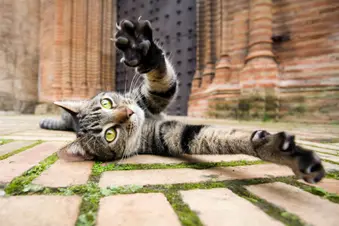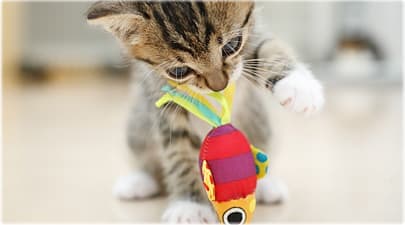Fun Facts About Cats


Question 1/12
There are more dogs than cats in the U.S.
- True
- False
Question 2/12
Cats can be right-pawed or left-pawed.
- True
- False
Question 3/12
Cats talk to each other by meowing.
- True
- False
Question 4/12
Chocolate is a special treat for cats.
- True
- False
Question 5/12
Cats can usually squeeze their bodies through any space their head fits.
- True
- False
Question 6/12
A cat’s whiskers are about as long as their body is wide.
- True
- False
Question 7/12
How high can most cats jump?
- About 3 feet
- About 4 feet
- About 5 feet
Question 8/12
All kittens are born with brown eyes.
- True
- False
Question 9/12
Cats have a third eyelid.
- True
- False
Question 10/12
How much of their life has a 15-year-old cat slept through?
- 6-8 years
- 8 to 10 years
- 10 to 12 years
Question 11/12
Cats don’t sweat.
- True
- False
Question 12/12
A female cat can have kittens only once a year.
- True
- False

